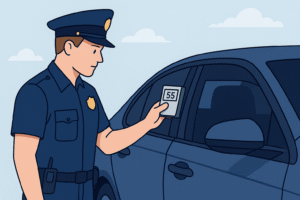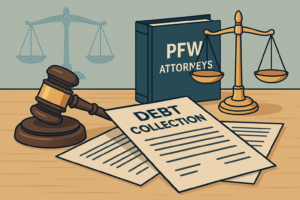When people have disputes that they aren’t able to clear up on their very own, like troubles with cash, property, contracts, or private rights, they will want to take the matter to civil court. Unlike crook court, where a person is accused of against the law, civil courts deal with private conflicts among people, organizations, or companies.
What is a Civil Court Case
A civil court case is a legal conflict between parties involving money, property, rights, and so on. One person (or company) brings a lawsuit against another person or business, alleging criminal or negligent behavior and the resulting damages or potential damages.
Examples of civil instances include:
- A landlord suing a tenant for unpaid hire
- A customer suing a commercial enterprise over a defective product
- A character suing some other for property damage or injury from an accident
- Divorce or infant custody cases (own family regulation is a department of civil law)
Key Terms in Civil Cases
If you understand the meaning of certain simple legal terms, it would greatly assist your understanding of the particular civil court stages. Here are some of the stranger ones explained in simpler terms:
Plaintiff:
The person or party who begins the lawsuit. They agree that they had been wronged and are asking the courtroom for help.
For example, if a person sues a contractor for no longer completing an activity, the homeowner is the plaintiff.
Defendant:
The individual or corporation being sued. They ought to respond to the claims made in opposition to them.
For example, the contractor being sued in the above example is the defendant.
Complaint:
The reputable record that the plaintiff documents to start the lawsuit. It explains what came about, what a civil complaint is, and what the plaintiff wishes (commonly cash or a motion).
Summons:
A criminal is aware that tells the defendant a lawsuit has been filed and explains how a whole lot time they have to respond.
Answer:
The defendant’s formal reply to the criticism. In the solution, the defendant can consider, deny, or provide an explanation for the claims made by the plaintiff.
Counterclaim:
If the defendant believes the plaintiff did something wrong to them, they are able to file their complaint in court.
For example, if a customer sues a mechanic for bad maintenance, but the mechanic says the customer didn’t pay, that’s a counterclaim.
Judge:
A felony authentic who oversees the case, makes sure the regulation is followed, and may decide the final results if there’s no jury.
Jury:
An organization of normal human beings (normally 6 to twelve) who pay attention to the case and help decide who wins, if the case is going to a jury trial.
Settlement:
A settlement between the plaintiff and defendant to resolve the case without going to trial.
Verdict:
The very last selection made through the decide or jury after hearing all of the evidence.
Judgment:
The court’s reliable order is based entirely on the decision. It may require one party to pay money or take a selected action.
Appeal:
If one facet thinks a prison mistake was made within the case, they can ask a higher court.
Guide to the Civil Court Process Step by Step
Understanding the civil court stages allows you to prepare for what’s ahead, whether or not you are submitting or defending a lawsuit. Here’s an easy breakdown of ways an ordinary civil case moves through the court docket system, together with where to report, how it starts, and what outcomes to expect.
Where to File a Civil Lawsuit
To begin, you need to recognize where to file a civil lawsuit. Most civil cases are filed in local state or county civil courts, relying on the amount of money involved or where the incident occurred.
Small Claims Court: For low-dollar disputes (commonly below $10,000)
State Civil Court: For larger claims concerning contracts, property, or private harm
Federal Court: For cases regarding federal legal guidelines or disputes among parties from exclusive states over $75,000.
Filing The Civil Complaint
The first step in any civil lawsuit is submitting a civil complaint. This is a prison record written by the plaintiff (the character submitting the case), pointing out:
What happened
Why is the defendant legally responsible
What the plaintiff wants (repayment, a court order, and so on)
The civil criticism outlines the records and legal motives at the back of the case. After it’s filed, the court will problem a summons, which has to be served on the defendant (the man or woman being sued).
The Answer and Counterclaims
As a response to the complaint, the defendant is obliged to file an answer that responds to every allegation through a formal document. Within this framework answer document, the defendant has the option to acknowledge, dispute, or profess ignorance regarding the allegations put forth. This stage is also important since it is at this stage where defenses of law can be put forward, such as claiming that the plaintiff is making baseless claims.
Moreover, additional and separate action for relief in a lawsuit may be initiated by the defendant who wishes further legal remedy against the plaintiff by making a counterclaim, thereby “You sue me, then I sue you.” There are set timelines with regard to responses from the other party. If no response within the permitted timeframe is given, a default judgment will be rendered by the court, simply granting whatever was asked by the plaintiff, hence fully bypassing natural justice principles.
Pre-Trail Motions and Hearings
Civil court stages the pre-trial phase of a case encompasses all the activities that take place before the main hearing. Both parties have the right to request from the judge that some central controversies be resolved during this preliminary stage. At this point, attorneys may also submit an application for withdrawal, which is a motion to dismiss requesting the court for legal cessation of proceedings as there are no merits to sustain it, or an application for summary judgment, which requests letting the utmost obvious possible judgment be made without trial.
These motions assist in determining specific matters at issue. As such, pre-trial sessions may also be convened to provide deliberations on their conduct, determination of relevant proof, including documents and evidence admissibility, and settlement promotion. This step aids in proper case management by preventing surprises during the trial while maintaining fairness to all interested parties.
Settlement Talks
A lot of civil cases do not go to court. The two disputing sides may instead agree to resolve the issue out of court. Settlement is an arrangement whereby both parties accept a specific resolution, usually involving money or promises to act or refrain from taking certain actions.
Legal costs are minimized, and time is saved due to settlements. There are additional benefits like reducing the chances of losing in court. In most matters, once a settlement is reached, it will be approved by the judge, thus closing the case.
The Trail
The case goes to trial if no settlement is reached. Whether it’s a judge or jury civil trial, the presiding authority and decision will depend on the requests by the parties involved.
During every trial:
Each side has the opportunity to give their evidence, along with any witnesses. Lawyers deliver opening and closing statements. A judge/jury listens to all parts of the case presented, and a decision is made. Depending upon how intricate the case is, trials can go from several hours to days, or even weeks.
The Verdict and Judgment
A decision (verdict) is made either by the judge or the jury after all evidence has been presented. The court will enter judgment, which constitutes an official decision of the court.
Based on the verdict or judgment given in a case, there are specific decisions that can be made regarding it. Payment was made to the plaintiff, money owed by the defendant was paid. Dismissal of the case if there was no proof submitted by the plaintiff.
Appeals
An appeal could be particularly necessary when one of the parties is not satisfied with the judgment that could doubtless be considered unfair, or where there is a chance that the court improperly applied the law. Although an appeal request does not imply a successful reversal, it gives a chance to the case to be reviewed by the higher court in terms of the mistakes of the law. They tend to use it as a measure of last resort in case of high stake or when the lower court ignored important legal issues.
Each party has the right to appeal if it believes the judge has committed a legal error, meaning that they are invoking the assistance of another court that could review different types of cases in civil court, the case from the beginning.
So this does not mean that appeals will have new evidence or new witnesses. Rather, the appellate court examines the trial record of the case from its fact-finding stage to determine whether the law was erroneously applied.
Enforcing The Judgment
Although you may win a case, don’t expect rapid results. Most of the time, the loser defies the verdict. In such types of cases in civil court, he needs to take certain actions to enforce judgment, such as:
Seeking the court’s approval for garnishing wages
Levying a lien on property
Requesting seizure of assets.
Conclusion
The civil court stages procedure may seem intricate; however, it travels along a well-defined path from a civil complaint to resolution. Every step allows both sides an opportunity to present their position, to ensure that the law fairly resolves disputes.





